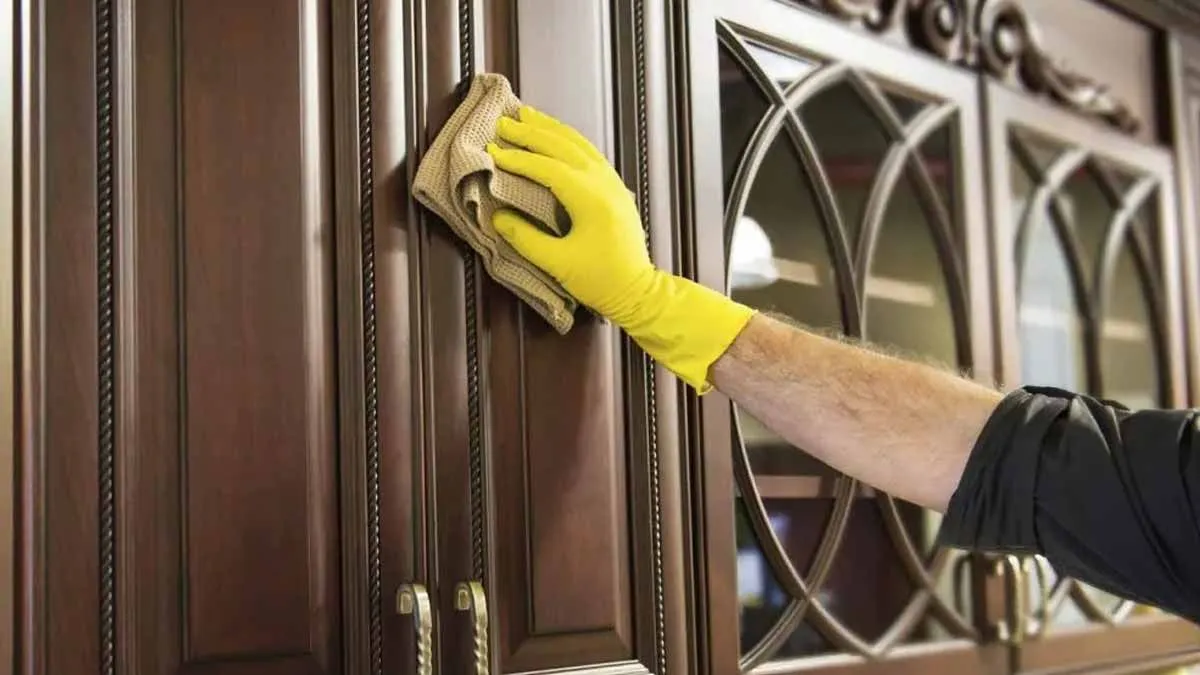Common Challenges You Might Face
Everyday life throws a lot at wood cabinets. Think fingerprints, greasy splatters, food stains, pet scratches, and oily dust—all of which can mess up their look. Plus, things like bathroom humidity, smoke, sunlight, and oxidation can lead to a hazy, discolored finish. Grease buildup not only looks bad but also gathers more dust over time.
Getting Started With Cleaning
The first step to looking after your cabinets is to remove particles without using any moisture. You can use a vacuum or a soft cloth with a wood conditioner to lift off the debris without leaving streaks. When cleaning by hand, be gentle to lift particles instead of smearing them around.
Regular dusting is a must for keeping your cabinets in good shape. Ron Shimek from Mr. Handyman recommends cleaning as needed—which often means weekly in busy kitchens—to stop buildup. Use as little water as possible; as Chris Marshall says, “A little water goes a long way,” helping you avoid swelling or spotting.
Handling Grease the Right Way
For a deeper clean, mix a mild dish detergent with warm water to tackle most grease. If you’re dealing with stubborn oil, try adding 1/4 to 1/2 cup of white vinegar to boost the solution without harming the finish. Steer clear of harsh degreasers like TSP (trisodium phosphate), ammonia, or bleach since these can damage the protective coatings.
When it comes to cleaning hardware like knobs and hinges, a soapy water solution usually does the trick. For metal that’s lost its shine, a metal polish can help, while WD-40 is great for cleaning off grimy hinges.
Polishing Tips for a Lasting Glow
Finding the right polish for your cabinets means matching it to their finish. Mineral oil is great for adding a bit of shine to the wood but remember to buff it in well to keep dust at bay. Paste waxes such as Liberon Black Bison deliver a long-lasting shine that enhances your cabinets over time. Avoid silicone-based products because they can seep into tiny cracks in the finish and make future refinishing harder.
If you prefer homemade solutions, there are budget-friendly options. Vinegar works well as a degreaser—even if it has a strong smell—and olive oil can help break down grime, though it might leave behind a residue that catches dust. Diluted dish soap remains a gentle yet effective choice for regular cleaning.
Keeping Your Cabinets Looking Their Best
Getting a long-lasting shine on your wood cabinets is all about regular, light cleaning with simple soaps followed by a quick dry. Setting up a routine that starts with dusting, then washing gently, and testing vinegar solutions when needed can make a big difference. As Ron Shimek advises, “Test a hidden spot first since acidity can harm certain finishes.”
By paying attention to every step—from taking off the initial dust to polishing—you can keep your wood cabinets looking sharp and extend their lifespan. With careful, informed practices tailored to protect these treasured home features from daily wear and tear, they continue to shine and serve as functional highlights in any living space.
